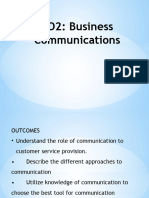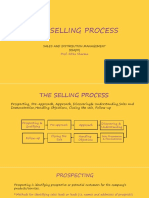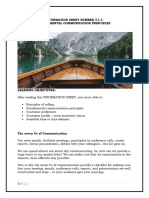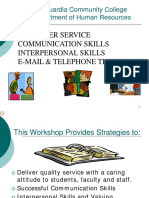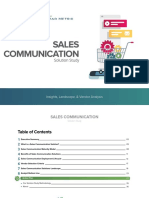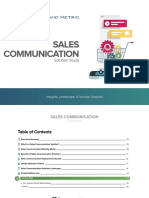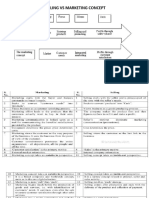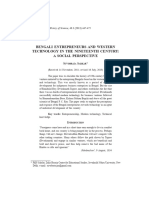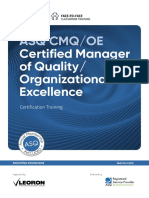Chapter 5:
Communication skills
Bùi Ngọc Tuấn Anh (PhD)
buingoctuananh@gmail.com
Chapter objectives
• Describe and apply the communication process and understand the key
factors for successful communication.
• Apply discussion skills in your everyday communications with the
customer.
• Prepare effective aligning strategies for individual customers based on
their social profile.
buingoctuananh@gmail.com
Communication Skills
• To give and get information,
• evaluate and explore ideas and opinions, and
• persuade others
• Basic communication process
• Discussion skills
• Social profiling
buingoctuananh@gmail.com
1
�Basic communication process
Popular Myth: “Communication Is Simple. I Never Think About It.”
buingoctuananh@gmail.com
Key factors in good communication, Senders
• Know the customer and the responses the customer wants.
• Good at encoding messages / how the customer decodes them.
• Send messages through media that are efficient and receive feedback.
• Receive feedback and have an efficient feedback mechanism
buingoctuananh@gmail.com
Listening: the customer connection
• Giving your full attention and focusing on the customer's message.
• Asking clarifying questions to ensure understanding.
• Identifying nonverbal cues that may provide additional insights.
• Responding thoughtfully to demonstrate you've been listening.
buingoctuananh@gmail.com
2
�Discussion skills: guiding the sale
• Asking insightful open-ended questions
• Transitioning smoothly
• Presenting solutions with value
• Handling objections effectively
buingoctuananh@gmail.com
Asking insightful open-ended questions
• Craft questions that go beyond "yes" or "no" answers.
• to delve deeper into customer needs and pain points. Here are some
examples:
• "Can you tell me more about the specific challenges you're facing with your
current process?"
• "What are your ideal outcomes for improving [specific area]?"
• "What would success look like for you in achieving [specific goal]?"
buingoctuananh@gmail.com
Transitioning smoothly
• Guide the conversation naturally between topics to maintain a logical flow.
Use phrases like:
• "That's a great point. In terms of achieving that outcome,..."
• "Building on what you mentioned about..., how would...?"
• "To understand your needs better, can we talk a little bit about...?“
• "That's a great point. In terms of [related topic], ..."
• "Building on what you mentioned about [previous topic], ..."
buingoctuananh@gmail.com
3
�Presenting solutions with value
• Don't just talk about features. Highlight the specific benefits your product
or service offers that directly address the customer's challenges.
• Focus on how your product or service:
• Solves their pain points and helps them achieve their goals.
• Provides a clear return on investment (ROI).
• Offers unique benefits compared to competitors.
• Use transitions like:
• "Considering what you've shared, our product's X feature can help you by..."
• "To address the challenge of Y, our solution offers Z functionality, which can..."
• "With our service, you can expect to see improvements in A, leading to B for
your business.“
buingoctuananh@gmail.com
Handling objections effectively
• Objections are a natural part of the sales process. Here are some steps
• Acknowledge the objection and show empathy.
• Ask clarifying questions to fully understand the concern.
• Provide factual information and address the specific issue.
• Reiterate the value proposition of your solution.
buingoctuananh@gmail.com
Social profiling: understanding your customer
• Understanding customer's personality and communication style, can help:
• Identify dominant personality traits that influence buying decisions: analytical,
decisive, amiable, or expressive?
• Values and motivations: what drives their decision-making process?
• Adapt your communication style to resonate better with the customer.
• Build stronger rapport by understanding their preferred communication
preferences (direct, indirect, etc.).
buingoctuananh@gmail.com
4
�Social style matrix
Social profile matrix and common behaviors
buingoctuananh@gmail.com
Sixteen sub-quadrants Communication strategies for specific social styles
buingoctuananh@gmail.com
Sixteen sub-quadrants
Fallback behavior for each social style when experiencing tension
buingoctuananh@gmail.com














